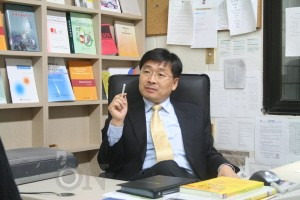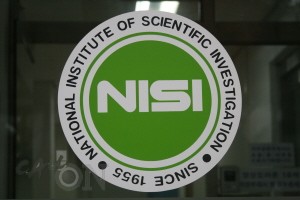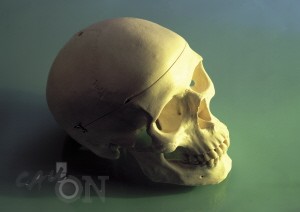
Scientific investigation is an activity that finds the truth of crimes by using scientific knowledge (physics, chemistry, psychology, and others), skills and equipment. Scientific investigation can be divided into the various parts, such as document judgment, narcotic, gene, voice analysis, photograph and others. There is a range of meaning about scientific investigation, and it is widening because of developments in science and technology.
Although scientific investigation looks modern, it has systematically existed since the Joseon Dynasty period. The representative scientific investigator is Jung Yak Yong, who wrote a famous book, ‘Hemhemshinsa’, about scientific investigation. The book explains minutely all sorts of investigation techniques, leading cases, matters to be attended to in the examination of a corpse, the gathering of evidence and others. “Also in the Joseon Dynasty period, there were advanced investigations about corpse examination, paternity tests, detection of toxic chemicals. For example, there were some scientific instances, ‘overweight and young people’s corpse decay faster than an old man’s corpse’, and ‘we must consider local declination because climate between the south and north is different.’” Lee Jong Ho, who is a science writer, advocated in a scholarship seminar on the Day of Science. You can see full condition of the Joseon Dynasty period’s scientific investigation in the TV show, ‘Byulsoongum’.
Korea’s modernized scientific investigations started from the establishment of the Fingerprint Department on the Bureau of Judicial Affairs in April 1909. Then, the National Institution of Scientific Investigation (NISI) came into operation by Presidential decree in March 1955. “We can see that at this point in time, there is an opportunity of Korean scientific investigation’s rapid development,” Park Nam Gyu, the head of the department of analyzing genes in NISI, said. “Recently, through adopting a system for a medical examiner, NISI allocated a medical examiner, who is trained for 6 months. On the one side, police are solving some problems themselves with fingerprints, montage, footprints, verifying detailed evidence and others. Once again, the present level of Korean scientific investigation has risen.”
Now, there are various institutions of scientific investigation and they are developing investigation technology. In the center of the formal institutions, there is a National Institution of Scientific Investigation. The NISI, which entered upon the 52th anniversary, is a prop of Korean scientific investigation. They solved around 210,000 cases yearly and have a nationwide network system and 5 branch offices throughout the country. “If you watch a large crime or intellectual crime on television, there is always a NISI, and we are making an effort to become acquainted with reliance upon the nation,” Park Nam Gyu said. Furthermore, there are Korean Police Scientific Investigation (KPSI), and a scientific investigation department in the Supreme Prosecutor’s Office.
On the contrary, so far there are some problems in Korean scientific investigation. First, financial support is insufficient. NISI is tormented by an insufficient budget every year. In 2005, they were supported with a 135 million won grant from the government, because their budget, 800 million won, was insufficient for the expense of a gene test. This year NISI expects their budget to be over budget by 400 million won.
Second, human resources are also deficient. According to NISI, the number of requests for gene discrimination has increased 30% per year. It will be close to 60,000 this year, because of a gene discrimination’s generalization and request for gene discrimination has expanded. However, there are only 35 people, who are in charge of gene discrimination in NISI. There are 150,000 people in America and 700 people in England doing the same job.
Finally, Korean scientific investigation has a problem during coroner’s inquests. There is not only a short supply of coroners, but also an institutional problem. In Korea, coroners do not have the right to perform an autopsy on his/her own authority. The Korean autopsy system is too passive compared to other countries. This system can cause not only delayed solutions, but also vulnerability to new infectious diseases.
Until now, there are some problems in Korean scientific investigation. However, it is an undeniable truth that improvement is in progress. Many formal and informal institutions are making efforts on their own. Above all, an increase in the public interest toward scientific investigation is the most important change, because this interest will promote the development of our scientific investigation. We can confirm this phenomenon throughout several parts of our culture; for example, the TV show ‘Byulsoongum’, ‘Damo’ and the every many kinds of books and movies. If this flow continues and the public and people, who are related to scientific investigations endeavor together, there will be a Korean version of the drama ‘CSI’.

Interesting Investigation Techniques
Hypnosis investigation: If a victim or eyewitness does not remember the situation of a crime, hypnosis investigation is used. It can refresh deleted memory from unconsciousness.
Reconstruction of facial features: It is a way that attaches gyps or clay to a skull of a skeleton corpse to revert the features of a corpse’s lifetime.
Spirit investigation: It is a way that a spiritualist finds a clue to solving a problem using a thing’s spirit in place of crime. However, many people say that it is so indisputable.
Lie detector: A lie detector is an electronic machine to find out whether a suspect is telling the truth. If criminal do not say the truth, this machine will catch a brain’s psychological change.

